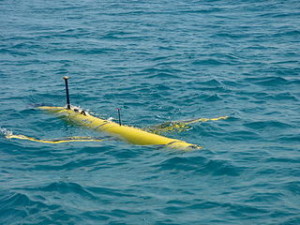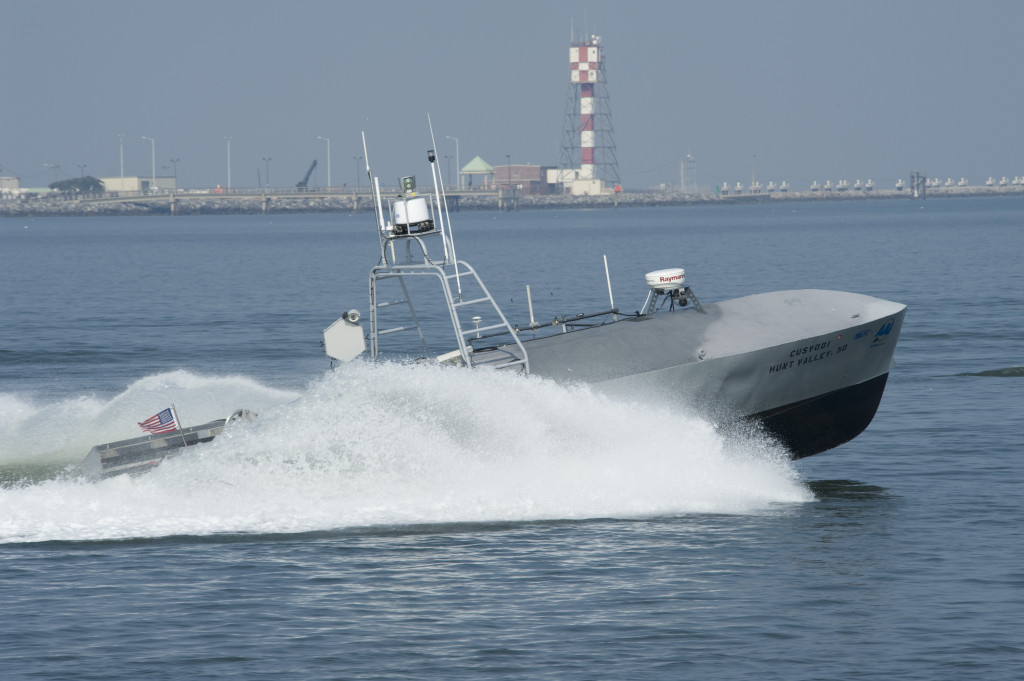With all the concern over autonomous robots in the military, one would think that they are more of a future concern than reality. However, the U.S. Navy has operated robot ships for many years and continues to develop advanced capabilities for those autonomous ships.
I saw this article on the progress of new robot ships in America’s Navy and did some research on some of these craft. Although photos exist for some of the more recent developments, the ones shown here from several years ago are still relevant for the showing the capabilities of these bot ships.

Bluefin-12 AUV with a Buried Object Scanning Sonar (BOSS) integrated in two wings. This picture was taken in January 2005 of the coast of Florida during engineering trials.By Mierlo at English Wikipedia [Copyrighted free use], via Wikimedia Commons
In order to counter the threat of diesel-electric submarines, the U.S Navy wants to develop these autonomous sub-hunters. Diesel-electric subs are very cost effective compared to a nuclear attack boat and they can operate very quietly. So, these subs are difficult to detect and even though they have limited range, pose a significant threat.
The primary motivation for developing these robot ships is cost. They can operate in shallow waters and survey large areas to identify threats. The robot ships will not attack, but will call in other navy assets to deal with the targets.
Work on the U.S. Navy’s new anti-submarine drone is progressing and that’s bad news for diesel-electric subs.
The prototype of the ACTUV is named Sea Hunter and is due to begin sea trials in the fall of this year. Then the decision will be made on deployment of these vessels.
%20Global%20Nav%20-%20About%20Us%20-%20Offices%20-%20TTO%20-%20TTO%20Featured%20Content%203_287_228.png)
The prototype of the U.S. Navy’s robot ship is the Anti-Submarine Warfare Continuous Trail Unmanned Vessel (ACTUV) Image Credit: darpa.mil
What do you think about these robot ships? The military seems to be set on developing autonomous vehicles of all kinds. Although these ships will not be armed, but they will have to be able to correctly identify threats from other surface ships and other objects on and under the water. These robot ships will have to operate for months autonomously and probably at great distances from other support vessels if the details of these designs are correct.
Perhaps the robot ships will have human monitors to oversee their operations and take the helm if needed. It is hard to believe the robotic craft would be purely autonomous at all times.
Let me know with your comments.
Source: US Navy to Deploy Robot Ships to Track Chinese and Russian Subs


Recent Comments